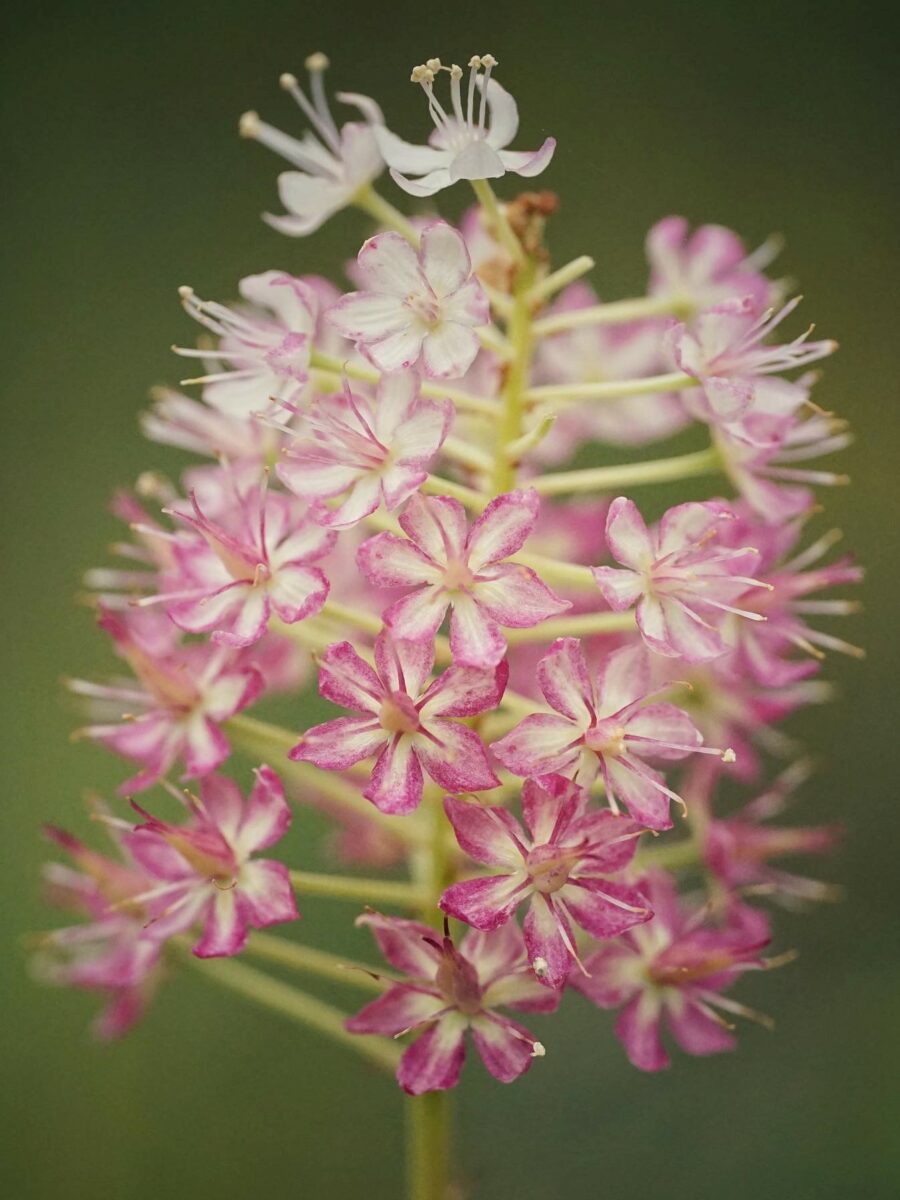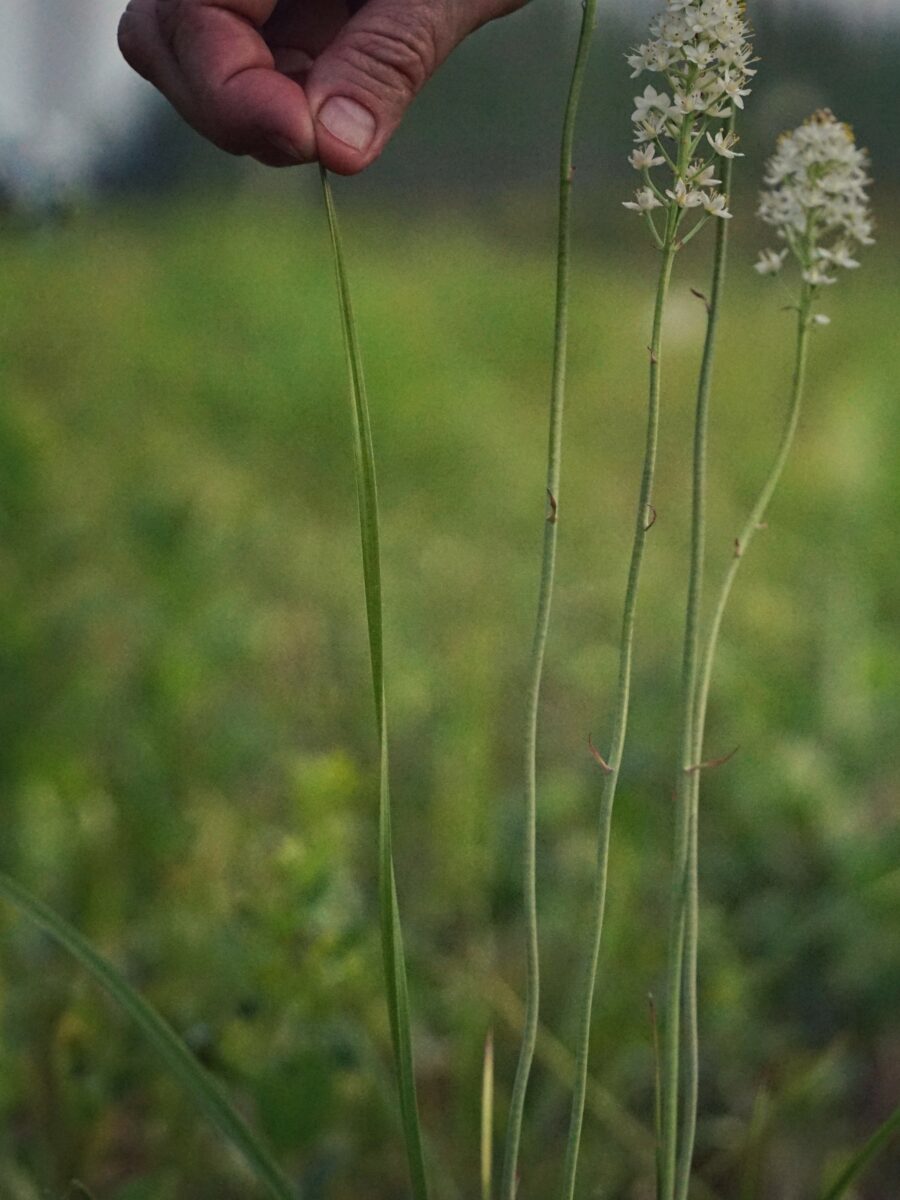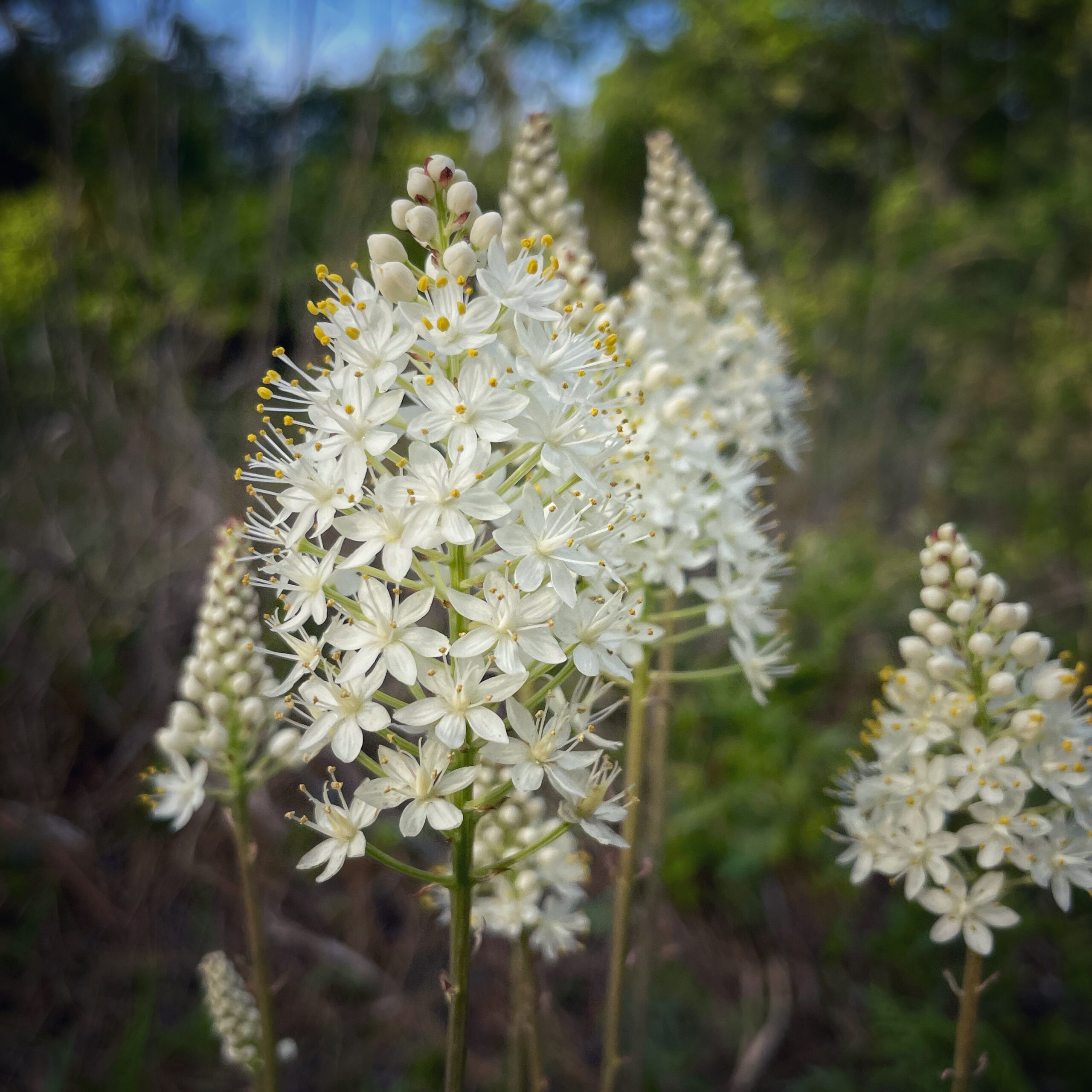Crowpoison
Pictured above: Crowpoison (Stenanthium densum) by Emily Bell. Click on terms for botanical definitions. View post as a PDF.
The beautiful spring blooms of Crowpoison stand out among its lower-growing wildflower counterparts in savannahs, wet flatwoods, bogs and even moist roadsides. This winter-dormant forb responds especially well to fire, after which large colonies can be seen in full bloom. Numerous insect pollinators are attracted to the flowers.
The striking and fluffy plume of white to pink flowers gives this plant its other common name of Osceola’s plume. Forty to 100 small, 6-petaled white flowers form at the apex of a slender, almost leafless, 1-3 foot stem. The flowers bloom from the bottom of the inflorescence to the top and turn a deep pink to purple as they age. Pollinated flowers then form dark brown seed capsules. Prominent alternate basal leaves are needle-like and range from 4 to 20 inches.

Photo by Emily Bell

The common name, Crowpoison, refers to its toxic nature derived from high levels of alkaloids found in its foliage and bulbs. It is thought to be the most toxic member of a group of plants referred to as the deathcamas, which also includes another Florida native wildflower, Sandbog deathcamas (Zigadenus glaberrimus). Crowpoison can be deadly to people, pets and livestock.
Family: Melanthiaceae (Bunchflower family)
Native range: North through Central Florida
To see where natural populations of Crowpoison have been vouchered, visit florida.plantatlas.usf.edu.
Hardiness: Zone 8A–10A
Lifespan: Perennial
Soil: Wet to moderately dry, acidic soils
Exposure: Full sun
Growth habit: Up to 3 feet
Propagation: Division of bulbs, seed
Crowpoison is not commercially available. Visit a natural area to see it.

